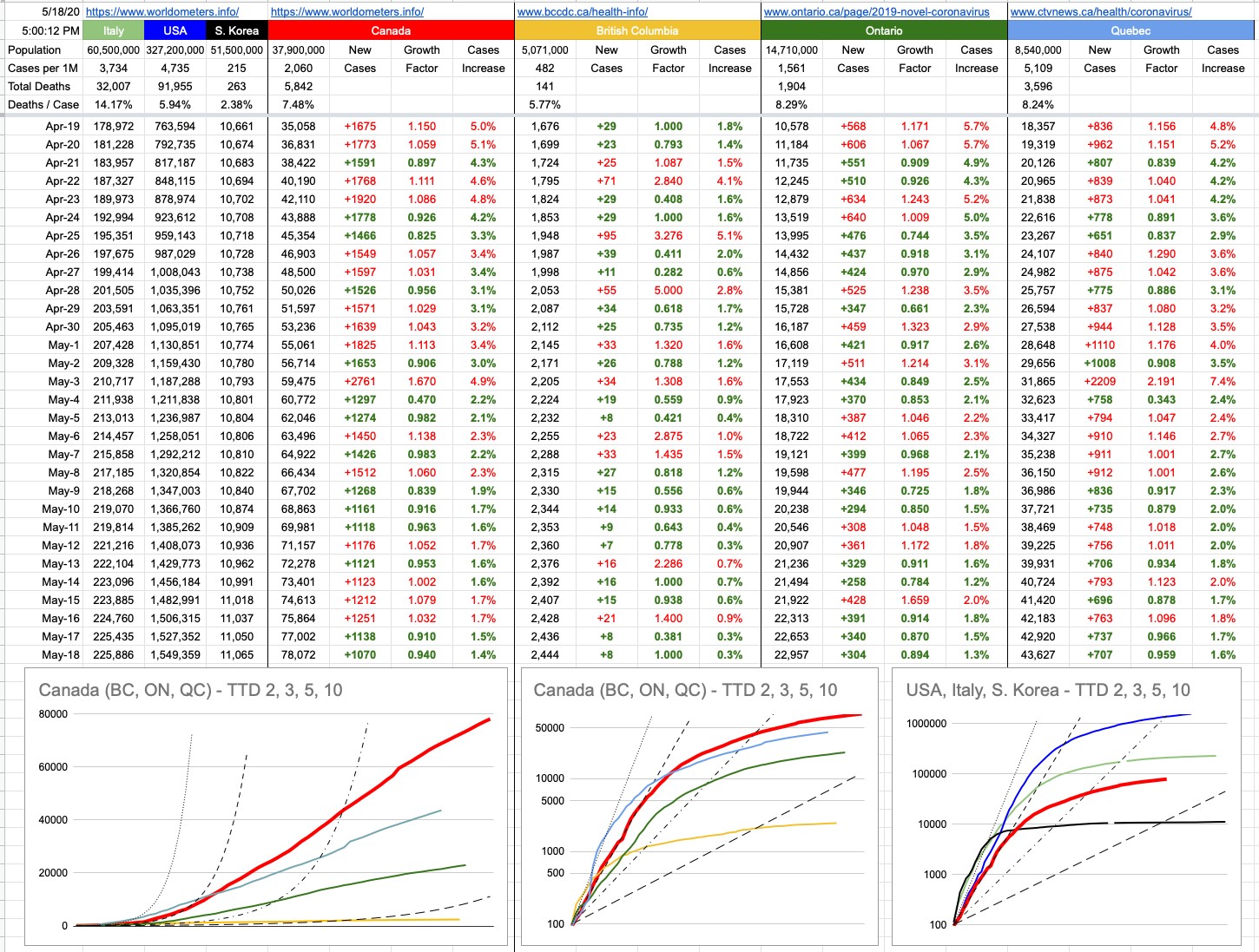Forty years ago, to the day… May 18, 1980, I was lying in bed reading… a lazy Sunday morning… reading, and listening to LG73. I had a window open, so the loud boom shortly after 8:32am was very audible. It rattled the windows. What the hell was that, I thought to myself? Nothing like a car crash, and everything else was silent outside. A distant bomb? Those teenagers across the back lane that always seemed to have a stash of firecrackers? I finally decided it must have been a big tree that fell over. Not that I’d ever heard a tree fall over near me… but then again, I’d also never heard a volcano 300 miles away blast 1.4 billion cubic yards of ash 80,000 feet into the sky.
But that’s what happened that morning, when Mount. St. Helens blew her stack. What’s interesting about it is that nobody was expecting it, and it came as a complete surprise. How could we ever have prepared for it?
Yeah, that’s complete nonsense. Experts from many disciplines had been well-aware of the strange rumblings around Mt. St. Helens for months… there had been a small earthquake on March 20th, the first of thousands over the next eight weeks. There had been 16,000-foot ash plumes. There had been fresh craters. There had been sightings of magma. While things got quiet again in late April and early May, there was an increasing bulge on the north face that was growing by 5 feet per day. On May 7th, things started firing up again, and the bulge’s growth became worryingly inconsistent. Geologist David Johnston, camped 5.5 miles away, dutifully kept measuring and reporting his findings. The last of those reports was at 6:53am. His last words, captured shortly after 8:32am by a nearby ham-radio operator were, “Vancouver! Vancouver! This is it!” — a message to his fellow USGS researchers, at the University of Washington in Vancouver, WA., that never made it. Two miles away, Gerry Martin, a radio operator tasked with observing the volcano for the state’s department of emergency services, saw what had happened and what was coming. His last words were, “It’s going to get me, too”.
There were only 57 deaths attributable to that eruption, and I say “only” because that number could have been higher — into the thousands. Indeed, it was scientists — I repeat, scientists — like Dr. David Johnston, an expert in volcanoes, and numerous other researchers… who pleaded with authorities to keep the area closed — an area very popular with campers and hikers and visitors to nearby lodges. For the most part, people listened.
One of those who didn’t was a man by the name of Harry R. Truman — not to be confused with former president Harry S. Truman — who refused to leave, despite numerous pleadings, suggestions and finally, orders — to do so. He owned and operated the Mt. St. Helens lodge, right at the base of the mountain, near Spirit Lake. For months, he was told to leave. He dismissed the danger and he dismissed the scientists’ claims. Even though he was being woken up continually by earthquakes and could see plumes of ash shooting up… he was heard saying things like, “the mountain has shot its wad and it hasn't hurt my place a bit, but those goddamn geologists with their hair down to their butts wouldn't pay no attention to ol' Truman."
By then, the state had set up a restricted zone well outside the perimeter of the mountain, and it infuriated them that people would ignore it, in many cases to interview ol’ Truman, putting themselves in significant danger.
Truman was alone in the lodge (with his 16 cats) that Sunday morning. It’s likely he died instantly, from heat shock… his body vaporized… before the lodge and everything around it was engulfed by 150 feet (half a football field high) of volcanic debris.
In the weeks preceding the eruption, there was a lot of noise from a lot of people… open the mountain, open the campgrounds, think of the economy, we need the tourism, we’re willing to take the risk, it’s our right as free Americans, etc etc. All too familiar words these days. The parallels between these two situations, 40 years apart, are many.
There are some notable differences too. At what point does the government’s (or society’s) role in trying to keep people safe… cross the line? That fine line is being tested these days — between freedom, and the perceived benefit of the greater good. History is full of people running towards impending disasters, like ignoring evacuation orders at the base of an impending volcanic eruption, or running to the beach to take some cool pictures of the expected tsunami, or visiting a tribe of cannibals to spread the word of Jesus, or thinking you’re ready to summit Mt. Everest because you can do the Grouse Grind in less than 45 minutes. More power to you, I suppose — as long as your narcissistic desire to show the world how invincible you are… doesn’t take others down with you.
If Truman wanted to die in his lodge (he was 83), perhaps it’s his right to do so. He wasn’t hurting anyone else (aside from his 16 cats). And perhaps that’s the biggest difference of all, the issue some people have a hard time understanding… that sometimes, it’s not just about you.
Looking at the numbers across Canada… lots of recent green days… and, especially here in B.C., it’s time to take things to the next level… bring on the openings… but where it goes beyond that is entirely up to all of us, collectively. This can be slow, steady and predictable… or not so slow, not so steady… and somewhat less predictable. The rules have served us well so far; let’s stick with that.
View Original Post and All Comments on Facebook



Leave A Comment